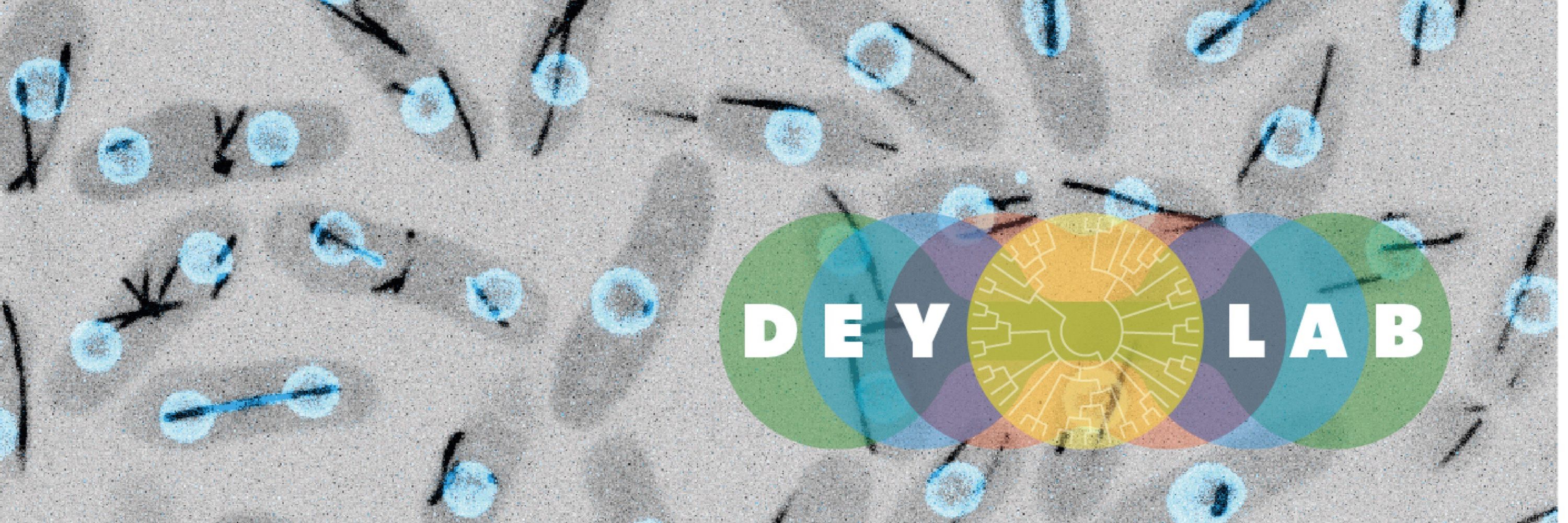
evonuclab.org

Reporting for duty with tales of the weird and wonderful cell biology you never knew you needed to know 🫡
🧪🌏🦠
#PlantScience
Paper here: www.science.org/doi/10.1126/...
Perspective here:
www.science.org/doi/10.1126/...

#PlantScience
Paper here: www.science.org/doi/10.1126/...
Perspective here:
www.science.org/doi/10.1126/...
#protistsonsky 🧵
#protistsonsky 🧵
At 63C, most eukaryotic cells would be busy exploding noisily, forget even trying to divide.
The microbial universe never ceases to astound 😍
Thanks for letting us be a tiny part of this! #ExpandThemAll

At 63C, most eukaryotic cells would be busy exploding noisily, forget even trying to divide.
The microbial universe never ceases to astound 😍
Thanks for letting us be a tiny part of this! #ExpandThemAll
Chirality is known to be important for the movement of microorganisms and active matter. In our new paper out today in @natphys.nature.com, we show that chirality is used by malaria parasites to control their motion patterns:
doi.org/10.1038/s415...
Here comes a 🧵 ... (1/9)
Chirality is known to be important for the movement of microorganisms and active matter. In our new paper out today in @natphys.nature.com, we show that chirality is used by malaria parasites to control their motion patterns:
doi.org/10.1038/s415...
Here comes a 🧵 ... (1/9)
Please help us by filling out this questionnaire: docs.google.com/forms/d/e/1F...

Please help us by filling out this questionnaire: docs.google.com/forms/d/e/1F...
If you're interested in protists, parasites, and/or biodiversity then please check out our website:
theholtlab.com/posts/ln5-21...
🚨 Deadlines vary between project.
✉️ Please reach out if you have any questions!




If you're interested in protists, parasites, and/or biodiversity then please check out our website:
theholtlab.com/posts/ln5-21...
🚨 Deadlines vary between project.
✉️ Please reach out if you have any questions!
#ProtistsonSky #ExpandThemAll
@fmikus.bsky.social




#ProtistsonSky #ExpandThemAll
@fmikus.bsky.social
the near-absence of reliable data about climate impacts over most of the
world. Due to the rich world's failure to fund research. We don't know
because our governments don't care. www.theguardian.com/commentisfre...

the near-absence of reliable data about climate impacts over most of the
world. Due to the rich world's failure to fund research. We don't know
because our governments don't care. www.theguardian.com/commentisfre...
www.nature.com/articles/s41...

www.nature.com/articles/s41...
www.science.org/doi/10.1126/...

www.science.org/doi/10.1126/...
Congratulations to all the authors of the paper 🍾!
kwnsfk27.r.eu-west-1.awstrack.me/L0/https:%2F...
Cryo-EM reveals open and closed Asgard chromatin assemblies: Molecular Cell www.cell.com/molecular-ce...

Further details:
jobs.rptu.de/jobposting/1...

Further details:
jobs.rptu.de/jobposting/1...

Naegleria encodes 3 Myo2s which contract its actin network—the first evidence of contractile Myo2 outside of Amorphea.
Myo2 is actually widespread in Naegleria's relatives and correlates with fast cell crawling.
Read more: www.cell.com/current-biol...

Naegleria encodes 3 Myo2s which contract its actin network—the first evidence of contractile Myo2 outside of Amorphea.
Myo2 is actually widespread in Naegleria's relatives and correlates with fast cell crawling.
Read more: www.cell.com/current-biol...
But the MESACLIP runs also do much more than that.

But the MESACLIP runs also do much more than that.
www.biorxiv.org/content/10.1...

www.biorxiv.org/content/10.1...
Review article published in @natrevmicro.nature.com with @bupbuse.bsky.social, Andriko von Kügelgen and @vikramalva.bsky.social.
S-layers are everywhere!
www.nature.com/articles/s41...

Review article published in @natrevmicro.nature.com with @bupbuse.bsky.social, Andriko von Kügelgen and @vikramalva.bsky.social.
S-layers are everywhere!
www.nature.com/articles/s41...
www.biorxiv.org/content/10.1...

www.biorxiv.org/content/10.1...
Join a world-class biomedical research institute at the heart of the Vienna BioCenter, where curiosity drives discovery.
Lead your own lab, pursue bold ideas, and shape the future of science at the IMP: www.imp.ac.at/career/open-...

Join a world-class biomedical research institute at the heart of the Vienna BioCenter, where curiosity drives discovery.
Lead your own lab, pursue bold ideas, and shape the future of science at the IMP: www.imp.ac.at/career/open-...
EMCG — droplet-based single-particle genomics method 🧬⚠️Sequencing marine microbes one by one — in nL of seawater!
Ultra-high resolution — no culture, no bulk averaging. A new way to see the invisible 🫥 🌊 rdcu.be/eOsUF #protistsonsky @bigelowlab.bsky.social

EMCG — droplet-based single-particle genomics method 🧬⚠️Sequencing marine microbes one by one — in nL of seawater!
Ultra-high resolution — no culture, no bulk averaging. A new way to see the invisible 🫥 🌊 rdcu.be/eOsUF #protistsonsky @bigelowlab.bsky.social
Latest from the lab. The conclusion is in the title!
Basically, we found that the KMN complex (outer kinetochore) is fully conserved between plants and fungi/animals, showing deep origin. (reminder, you are closer to a mushroom than a mushroom is to a plant.)

Latest from the lab. The conclusion is in the title!
Basically, we found that the KMN complex (outer kinetochore) is fully conserved between plants and fungi/animals, showing deep origin. (reminder, you are closer to a mushroom than a mushroom is to a plant.)
wi.mit.edu/news/alterna...

wi.mit.edu/news/alterna...

